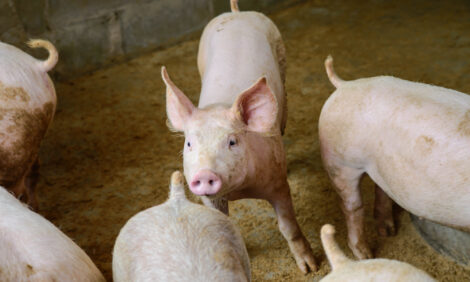



Tails or testicles: Which are better for PRRSV monitoring?
Pooled serum samples are a common method to monitor porcine reproductive and respiratory syndrome virus (PPRSV) in piglets. But this typically involves a limited number of samples, which reduces the sensitivity and makes detection especially challenging in low-prevalence herds.For example, in a 1,000-head herd with a 1% PRRSV prevalence, it would require more than 250 samples to achieve 95% confidence of detection, noted Megan Hood, North Carolina State University veterinary student.
“That’s just not feasible,” she said. “Processing fluids allow you to test more pigs, more frequently, while being practical, accurate and affordable.”
Hood conducted a study that compared the use of tails and testicles collected during piglet processing as a possible PRRSV-monitoring option. [1]
“These are aggregate samples, providing a high sensitivity even at low-disease prevalence,” she added. “So, for example, a farm that is PRRS-stable but comes up with a positive sample could prompt earlier responses, such as biosecurity, vaccination, treatment and animal-movement strategies.”
Tails vs. testicles
For the study, Hood enrolled six herds with a PRRS-positive, unstable status, which illustrates active PRRSV circulation. Tails and testicles were collected during piglet processing twice a week for two weeks, totaling 30 samples.
Past research has shown that piglet testicles provide a PRRSV-testing option, but because they represent only half of the population and not all farms castrate boar pigs, their use is limited. Tails, however, are a more complete representation of a population, Hood pointed out.
The tails were removed via clippers versus cauterizing so as not to limit fluids. Tails and testicles were collected in separate buckets, lined with gallon plastic bags. A hairnet or cheese cloth was attached across the bucket and secured with a rubber band to collect the tails or testicles but allowing the fluids to drip through.
Fluid levels varied
The testicles provided plenty of fluid, Hood noted, which was poured into a 50-ml tube. Fluid from the tails was collected similarly but the amount fell short. Consequently, the hairnet/cheese cloth was placed in a bag with 10 ml of nuclease-free water; the fluid was then squeezed out and poured into a 12-ml tube.
The tubes were frozen for shipment. Samples were tested by quantitative PCR (qPCR) for PRRSV, and positive results were further analyzed for cycle threshold (Ct) values.
The results showed that testicle fluids recorded higher PRRSV-positive results — 53.1%, compared to tails at 31.3%. The testicle fluid had a much wider range of Ct values, while the tails had a much higher Ct value than the testicles, Hood said.
The herd was experiencing a Type 1 (EU) PRRSV circulation at the time and was identified in 85% of positive samples. Type 2 (US) PRRSV also was found, sequenced and matched to the vaccine being given to piglets at processing.
Hood concluded that tails could be used to collect PRRSV samples at processing, although the sensitivity was lower than for testicles. “This may be due to the nuclease-free water diluting the samples,” she added. “It would be good to identify another way to collect more fluids from tails.”
A future study that she would like to see includes comparing only tails to serum samples for PRRSV testing. Also, she suggests a study to determine the number of pigs per tail-fluid sample required to ensure a PRRSV-positive test.
References:
[1] Hood M, et al. A comparison of the use of tails versus testicles in the production processing fluids for detection of porcine reproductive and respiratory syndrome virus. Student Seminar, 49th American Association of Swine Veterinarians’ Annual Meeting. 2018;99.









